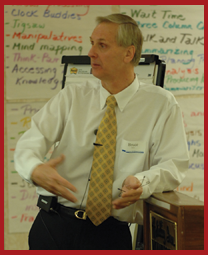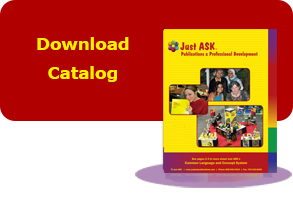
Volume V Issue II
Share this newsletter
It’s a Feedback World

Bruce Oliver, the author of Just for the ASKing!, lives in Burke, Virginia. He uses the knowledge, skills, and experience he acquired as a teacher, professional developer, mentor, and middle school principal as he works with school districts across the nation. Bruce has written more than 150 issues of Just for the ASKing! He is the author of Points to Ponder and co-author of Creating a Culture for Learning: Your Guide to PLCs and More.
As an admitted digital immigrant for whom modern technology does not come naturally, I have occasionally been slow to adapt to new tools. However, when I purchased a GPS (Global Positioning System) navigation device for my car, I read a lot of literature about the system and spoke with friends who talked about how helpful it was when they traveled. Once the device was in hand, I read the manual; I discovered that even for a digital immigrant it was relatively easy to follow. Soon it was placed on the dashboard of my car and provided clear visual and auditory directions to help me find my destination. The longer I used the GPS, the more comfortable I became with it, and the more I realized how helpful it was. On a recent trip, I listened to the voice explain how I could get to my designated address. As I waited at a stoplight, I realized that the GPS provided excellent feedback, made my trip more enjoyable, increased my confidence in using it, and made me feel more technologically savvy. The more I thought about the GPS device, the more I realized that its operation is a valid metaphor for how teachers should provide feedback to students in the learning process. I came to the conclusion that GPS (Global Positioning System) and GPF (Growth-Producing Feedback) have a lot in common. I started jotting down ways that they were similar and devised the comparison chart you see below:
| GPS | GPF | ||
| 1. | Lays out the entire trip from start to finish… | 1. |
A good teacher will frame the learning by explaining to students how new learning will unfold and how it will be assessed.
|
| 2. | Estimates how much time it will take to reach your destination and readjusts the time as the trip continues… | 2. |
A wise educator fully understands that time is the variable in learning; he or she uses feedback data from students throughout a unit to adjust the time required for learning to occur.
|
| 3. | Provides on-going and immediate feedback throughout the entire trip… | 3. |
Research teaches us that students learn best when a teacher administers formative assessments and uses the data to provide feedback to the students.
|
| 4. | Recalculates when you make a wrong turn… | 4. |
Many teachers use pacing guides to carry out unit plans. However, thoughtful teachers realize that it is often necessary to readjust plans when students do not learn in the allotted time.
|
| 5. | Tracks the trip in stages and provides visual and auditory details… | 5. |
By administering a learning styles inventory to students, a teacher can use the feedback from the profile to plan the best way to meet all student needs.
|
| 6. | Tells how far you must go to complete your trip… | 6. |
An essential component of good feedback is teaching students to self-assess their own learning and to set goals in order to complete required learning.
|
| 7. | Anticipates when traffic jams or roadblocks will occur… | 7. |
By analyzing feedback data from students and completing a task analysis for planned learning, a skillful teacher will be better able to predict when students might experience frustration in their learning and plan accordingly to avoid pitfalls and slowdowns.
|
| 8. | Indicates points you will see during the trip and lets you select stops along the way that are important to you… | 8. | When a teacher incorporates feedback as to how students learn best into the planning process, he or she can often give students choices in how to demonstrate their learning. |
The GPS system is merely one example of how feedback has become a vital part of our everyday lives. From the time they learn to play video games, children receive and expect feedback on how to move to the next level of the game. Numerous reality television shows determine outcomes based on feedback votes from viewers. As soon as a young person acquires his or her first cell phone or learns how to use a computer, instant messaging, text messaging, and responses from peers become a routine part of their day. And who among us has not completed an online survey, made an online purchase, received confirmation for a travel plan, or clicked on an FAQ icon to find an answer to a troubling question. In a world in which feedback is prolific and vital to our daily decision making, it seems only logical that our students should be receiving growth-producing feedback on a regular basis. As teachers assess learning and provide students with clear, detailed feedback, students better understand how to adjust their time and focus to meet learning benchmarks. As a result, they will be more motivated to learn, feel more empowered, will more readily fulfill learning goals, and their self-confidence will increase. Ask yourself: Is my GPF system operating at its peak proficiency?
Permission is granted for reprinting and distribution of this newsletter for non-commercial use only. Please include the following citation on all copies:
Oliver, Bruce. “It’s a Feedback World.” Just for the ASKing! February 2008. Reproduced with permission of Just ASK Publications & Professional Development. © 2019. All rights reserved. Available at www.justaskpublications.com.



